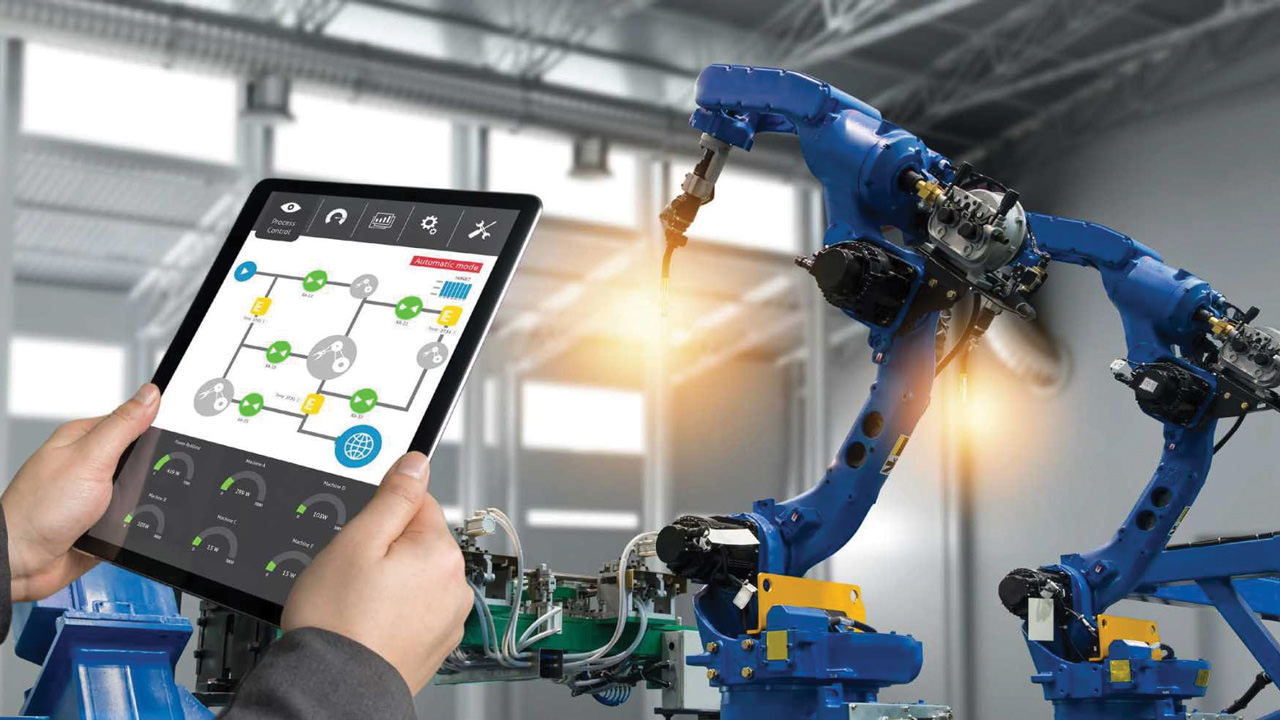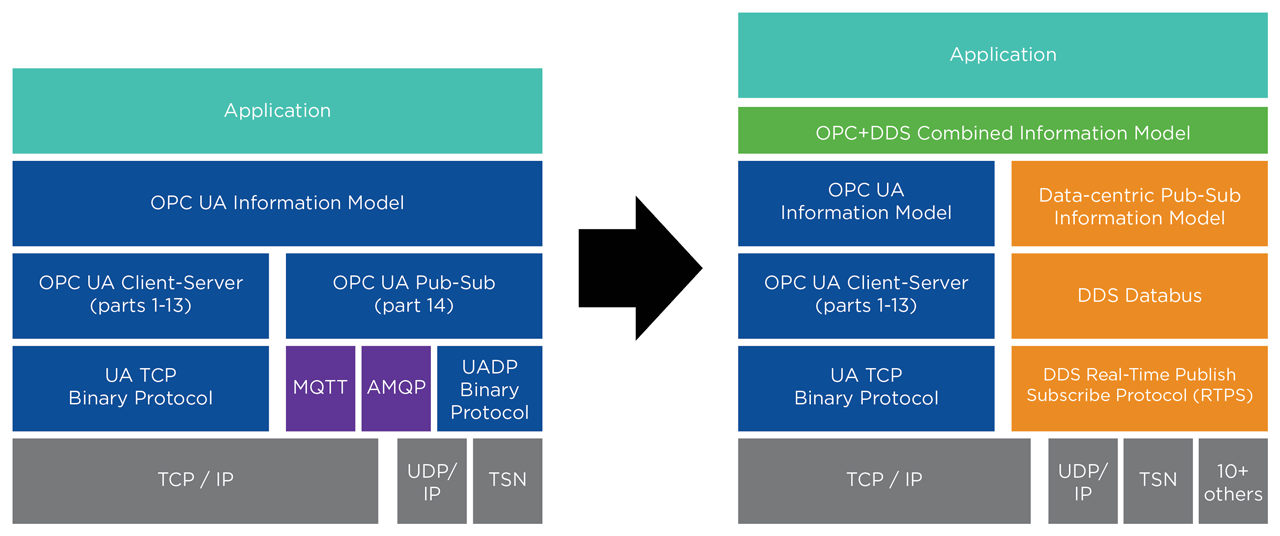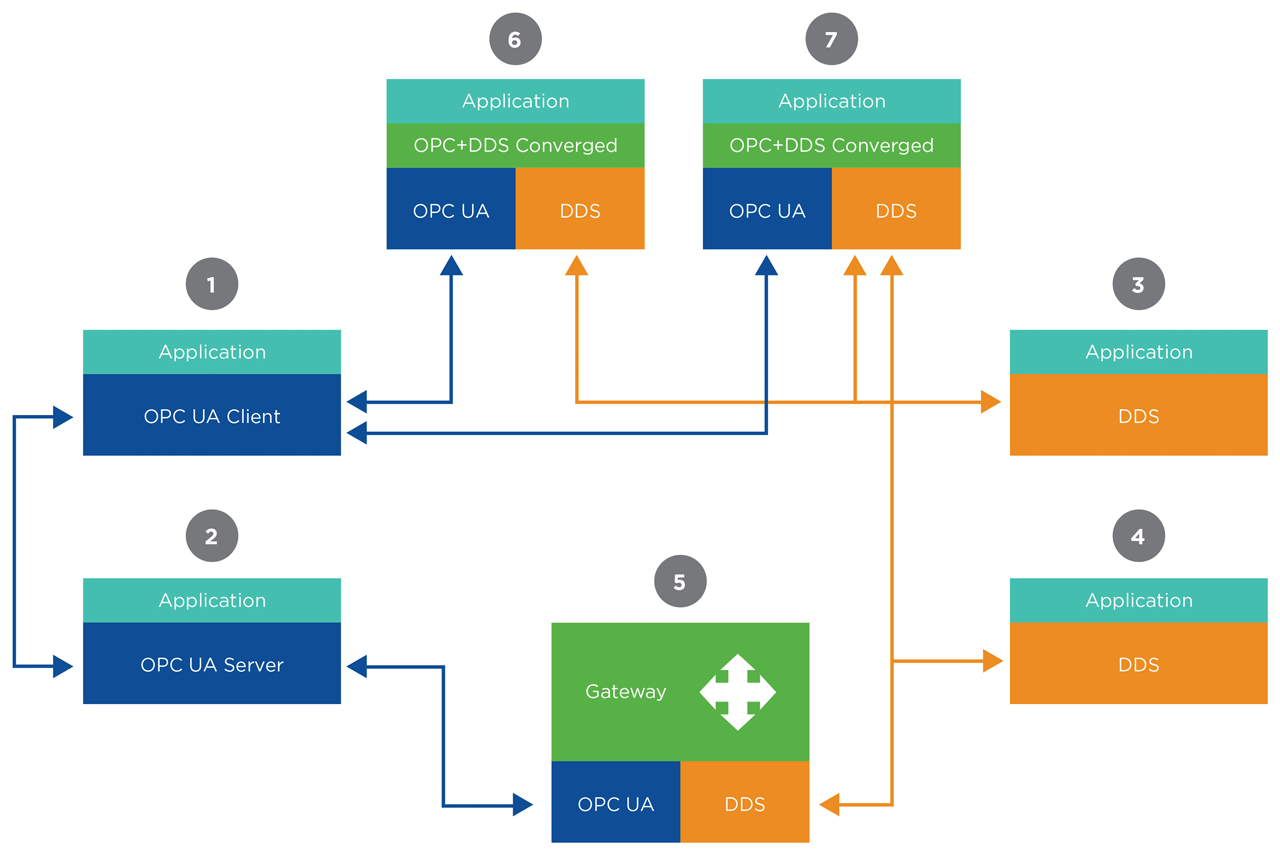TechnologyMay 27, 2019
A converged approach to industrial automation standards

This article is a summary of a new architecture proposal to integrate OPC UA, Data Distribution Service (DDS) & Time Sensitive Networking (TSN). The goal is to build a coalition of vendors, consortia and standards bodies to support this approach to define and standardize the architecture to unify industry.
Suppliers and end users need a complete solution to address the complexity of future industrial automation systems. These require:
- Interoperability to allow devices and independent software applications from multiple suppliers to work seamlessly
- Extensibility to incorporate future large or intelligent systems
- Performance and flexibility to handle challenging deployments and use cases
- obustness to guarantee continuity of operation despite partial failures
- Integrity and fine-grained security to protect against cyber attacks
- Widespread support for industry standard
Industry needs a clear, technically optimal, proven standards approach. This document proposes a new technical architecture to build this future. The design combines the best of the OPC Unified Architecture (OPC UA), Data Distribution Service (DDS), and Time-Sensitive Networking (TSN) standards. It will connect the factory floor to the enterprise, sensors to cloud, and real-time devices to work cells.

This diagram presents an alternative to the OPC UA pub-sub model through a proven, extensible DDS design. It will scale to thousands of nodes, eliminate dependence on servers, provide flexible physical layer implementation and enable fine-grained security. On the right, the OPC UA object-oriented model is merged with the DDS data-centric model. With this design, both client-server and pub-sub will be based on years of field-proven technologies and standards with industry-leading capabilities.
OPC UA value proposition & issues
OPC UA is the prevalent technology in industrial automation for moving data and information from field devices to the cloud. At the fundamental level, OPC UA focuses on creating a distributed object model where end users can integrate devices into working automation systems. OPC UA, along with its companion specifications, provides an environment for understanding and connecting devices. Importantly, it also allows introspection and control of the overall system through the OPC UA “information model.”
The OPC UA information model allows the information to be organized hierarchically, integrating devices into servers. Servers expose their information (data elements) through services which describe the operations that can be called on them. Clients (e.g., Human Machine Interface [HMI] and other tools) can browse the object model, read/write data elements, invoke methods and configure or manage a system using service calls.
OPC UA offers a powerful “client-server” model for applications (typically clients) to interact with a system. However, the client-server model is not well suited for the real-time information flows needed for real-time control and peer-to-peer communications (e.g. controller-to-controller). To date these real-time flows use multiple field bus protocols that do not interoperate with each other.
The desire to have OPC UA extend to these real-time communications is driving an initiative to create a new OPC UA publish-subscribe extension. This extension would define new publish-subscribe interfaces and UDP-based protocols, which could then be combined with the emerging TSN standard to create a technology with capabilities similar to the traditional field buses.
DDS value proposition & issues
DDS is a standard connectivity framework developed by the Object Management Group (OMG) that is widely deployed across multiple industries under the Industrial IoT (IIoT) umbrella. At its fundamental level, DDS provides an integration framework for software applications. It is used in thousands of deployed use cases, ranging from large power systems to autonomous vehicles. These systems combine intelligent software with physics-speed sensors and actuators. In these systems, DDS serves as both a control bus and edge-to-cloud connectivity framework.
DDS offers a powerful publish-subscribe databus. The DDS databus creates a secure global data space that provides a common data model to all devices and applications. The databus and common data model decouple applications from one another: Applications interact with the databus rather than with each other; they publish or subscribe to Topics, read or write data object Instances, and so on. DDS provides security at the data layer. Applications need permission to join the global data space and require fine-grained permission to access any Topic or data object they want to read or write. In this way applications are decoupled and secured, allowing for very scalable and elastic information distribution.
DDS also supports service-oriented communication, providing the tools needed to define, discover and invoke remote services.
DDS is an excellent fit for peer-to-peer communications and real-time information flow. It is implemented without any brokers or servers, unlike other publish-subscribe technologies like MQTT or AMQP. It has rich quality of service (QoS) capabilities, enabling each information flow to be tailored to its needs. For example, QoS can be set for reliable and durable for events and alarms, as opposed to best efforts and volatile for periodic sensor readings. Moreover, the functionality and security of DDS is transport-independent. It can therefore be deployed over WANs, multicast-enabled LANs, and TSN networks. Of course, in order to achieve real-time determinism, the transport needs to fulfill its part, which is why the use of DDS with TSN is a sensible choice for critical real-time loops.

The proposed Blend SDK will support 4 types of nodes: UA clients (1); UA servers (2); DDS nodes (3, 4); Gateway nodes (5); and Converged nodes (6, 7). Converged nodes use the Blend SDK that allows creating application nodes that use both patterns (OPC UA and DDS). Gateways allow systems that use a pure OPC UA SDK to interoperate with those that use a pure DDS SDK. Gateways are only needed to integrate systems that were not designed to use both client-server and publish-subscribe from the beginning.
IoT data & information modeling
Information modeling is key to the interoperability of future IoT systems. The OPC UA information model is fundamentally object-oriented. Servers contain nodes which can refer to other nodes in the same server or other servers. Nodes can contain data fields that can be remotely accessed as well as methods that can be remotely called.
Conceptually, the whole system can be seen as a large graph of objects. Every device, subsystem, or even an entire factory can be represented with nodes in this model. Nodes include extensive meta data that define device configuration and vendor-specific information. This enables interoperability and generic tools to view and interact with system operation.
Each device or system brings its own OPC UA object model along, realized as one or more OPC UA servers. A system integrator hooks clients to the OPC UA servers at deployment or runtime. It is expected that client applications will need to discover and connect to the servers explicitly, find the information they need, and interact with them.
DDS also contains powerful information modeling capabilities. However, instead of using an object-oriented model, it uses a data-centric model where data and services are global concepts that are not tightly coupled to a specific device. Therefore, because all data and services are available on the databus, the only information needed by the application is the domain ID, the topic (or service) name, and the key that identifies the specific data-object (or service instantiation). In this model, applications are not expected to connect to any servers or specific nodes. They just send their request to the databus, which takes care of discovering applications that are connected to it and getting information to the right place(s). This means discovery is automatic; data and services can flow to multiple locations; applications can join, leave or change locations and IP addresses; and so on. The databus automatically manages the correct flows.
Software architecture choices
So which model is best? Object-oriented client-server or data-centric publish-subscribe? Naturally, each has its own sweet spot.
The object-oriented model is a good match for device configuration where each vendor can define and expose its own information model. The object-oriented model is also useful as a way to provide a simple consolidated interface to a more complex subsystem. This model fits systems whose topology remains fairly static during operation. The data-centric model is a match for loosely-coupled systems that need to operate more autonomously. It can handle changes of topology and reconfiguration without impacting the running applications. It is optimal for publish-subscribe and real-time control through its direct serverless communication for critical data flows.
Complex systems need both approaches. By their very nature, complex systems have many components and flows. They have devices, real-time critical loops, subsystems with fairly static components as well as interactions that are more ad-hoc and dynamic. For example, the components bolted into a robot will be static during deployment, but in the case of mobile robots, their internal behavior and their interactions with external robots and agents may change dynamically.
The industry needs a common integrated solution. The natural instinct is to extend one of these models to cover its gaps. However, this is not the best solution. The current OPC UA pub-sub extension approach to extend the OPC UA object-oriented client-server model with “bolted on” publish-subscribe concepts cannot deliver the performance or scale necessary for complex environments: the lack of data-centric databus will result in limited facilities that do not scale.
Likewise, extending the DDS databus “decoupled” data-centric model of pub-sub Topics and Services to “bolt on” a more tightly-coupled object-oriented model would not provide the rich feature set currently available in OPC UA.
By defining a DDS data model that matches the OPC UA information model, DDS can talk to OPC UA client-server systems. The OMG has defined an OPC UA/DDS Gateway Specification that presents an initial mapping of OPC UA and DDS. With this, IIoT systems gain the necessary ability to integrate devices with fieldbus-like performance, while including the data modeling capabilities that are required for larger system integration.
OPC UA – DDS architecture
There is an opportunity to unify industry around a technical solution that combines OPC UA and DDS. OPC UA and DDS can co-exist and interoperate, and they already do. The OMG OPC UA/DDS Gateway Specification provides a mapping of the information models that allows pure OPC UA and DDS applications to exchange information with pure DDS applications. The intent of this article is to expand beyond this gateway specification with a more comprehensive integration proposal.
OPC UA needs tested, highly capable publish-subscribe technology. Therefore, we propose to implement the OPC UA information model in DDS. This provides an alternative to the current OPC UA pub-sub approach, replacing it with a DDS- based publish-subscribe design. The result will bring proven software and control integration together with industrial automation expertise. It will support multiple physical network types, allowing systems to transparently use Ethernet, TSN, and different transport technologies.
A new Blend SDK for this system would implement both DDS publish-subscribe and OPC UA client-server. OPC UA client-server applications would use OPC UA APIs and the OPC UA TCP binary protocol. Publish-subscribe applications would use the DDS API on top of the RTPS protocol. Both would implement a common type system and security model to ease interoperability.
This could be deployed two different ways:
- Using separate SDKs for OPC UA and DDS in combination with Gateway nodes
- Using the Blend (OPC UA + DDS) SDK
Applications that need both client-server and publish-subscribe would either use:
- The Blend SDK that allows individual nodes to do both OPC UA client-server and DDS publish-subscribe, or
- Existing separate OPC UA and DDS SDKs in combination with OPC UA/DDS Gateway nodes. Gateway nodes pass data between client-server and publish-subscribe applications. They also proxy system definition information on both sides, including discovery and security.
A typical distributed system would contain a mix of these nodes. The ability to support nodes that act as pure OPC UA clients or servers will remain important. These nodes can be implemented with the existing OPC UA SDKs and will have a smaller footprint. Likewise, nodes that primarily use publish-subscribe for communication could benefit from using a pure DDS SDK. Going forward, as the need for more capable and autonomous systems grows, more systems are expected to be built using the Blend SDK. There will be more Converged nodes and fewer pure OPC UA or pure DDS nodes. Once this transition is complete, the need for the Gateway will go away.
Full discovery across OPC UA and DDS works, even for systems that use a pure OPC UA or pure DDS SDK. DDS topics will be available in the address space of the OPC UA servers embedded in gateway nodes. Likewise, DDS participants will show their represented OPC UA services and clients in the gateway nodes. The converged nodes will be visible by both pure OPC UA and pure DDS nodes.
Initially, security will require separate configuration of the client-server and publish-subscribe access rules. However, both client-server and publish-subscribe can tie to the same certificate authorities and share the same credentials (e.g. signed identity certificates). A combined security model can be developed as part of the Blend SDK.
Implementation plan
Combining the proven OPC UA object-oriented information model with the DDS data-centric publish-subscribe model provides seamless, secure, reliable access to all system information and supports the needed information exchange patterns. This proposal presents a way to quickly deliver necessary standards and technology to deploy products and solutions. The OPC UA/DDS Gateway Specification provides a good starting point for this approach. This already provides mappings for type systems and the functional behavior of the OPC UA Gateway. The next step would be to start developing the Blend SDK.
The bottom line is that the industry cannot afford to wait a decade or more for the necessary technologies to evolve and mature. This proposal of a new, integrated architecture addresses the complex requirements of industrial automation with timeless durability and complete flexibility. The well- developed technologies of OPC UA and DDS can be combined, with the effort going into integration rather than ground-up redesign.
End users expect easy integration of data models into their complete systems. Integrating OPC UA and DDS provides standard information models across the industrial landscape. It also offers complete extensibility to add a custom data model. Long term, industrial automation end users will achieve vendor independence, an installed base of products and services, and platform options.
Next steps
This article is a proposal for industry review and comments. Our goal is to build a coalition of key vendors, industry consortia and standards bodies to support this approach.
To comment on this article, please contact Gerardo Pardo ([email protected]); Fernando Garcia ([email protected]); or Costantino Pipero ([email protected]).

